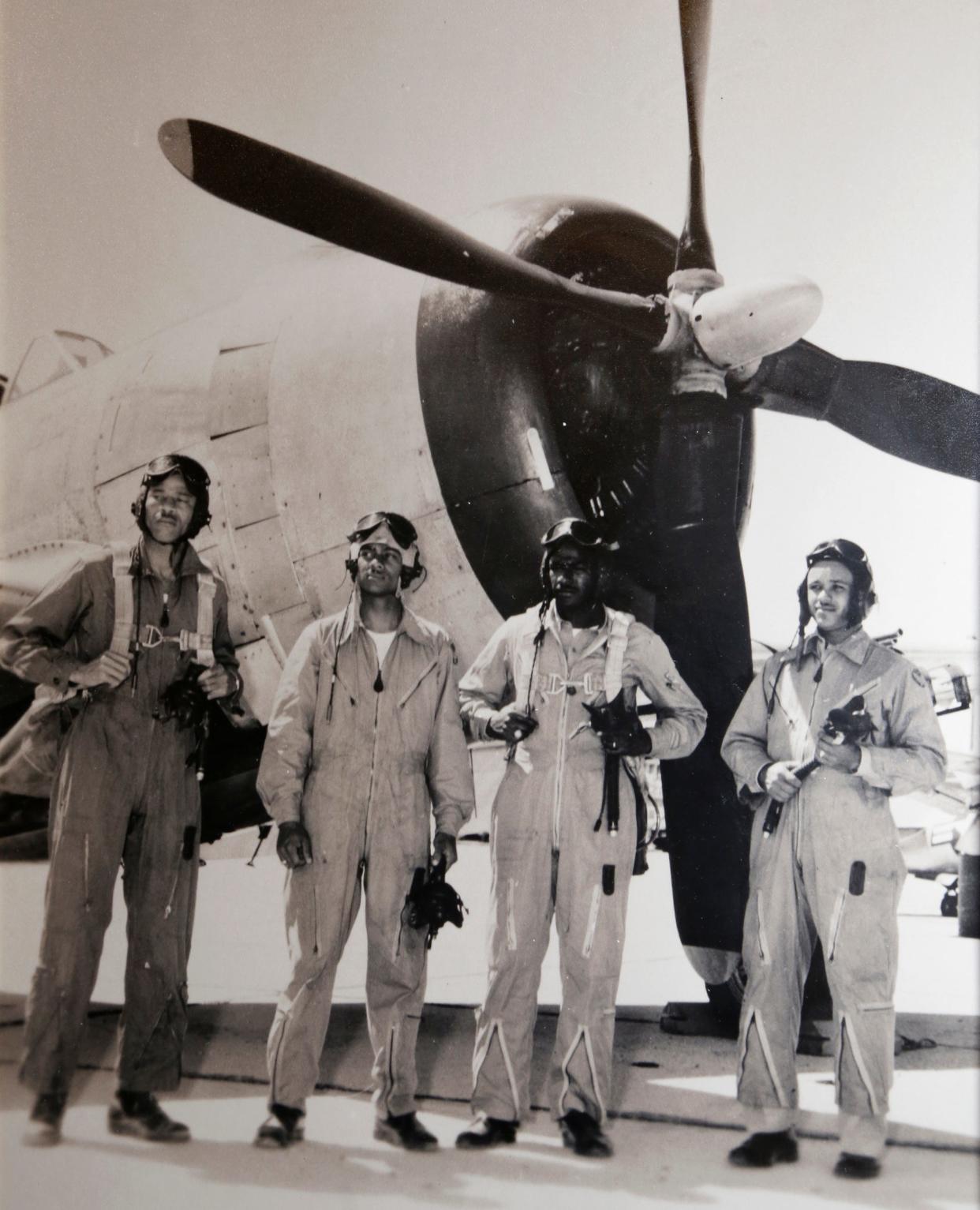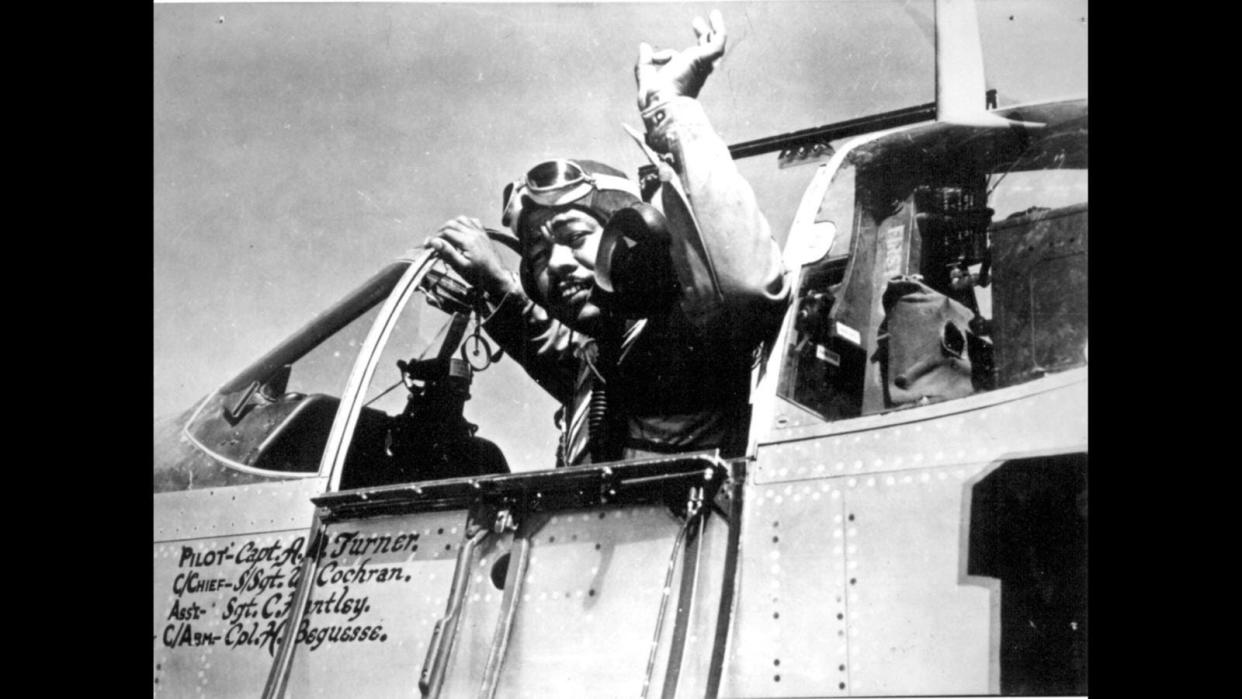Florida has new state holiday to commemorate Tuskegee Airmen, first Black flying group in U.S.
On April 11, Gov. Ron DeSantis signed Florida's 22nd state holiday into law: Tuskegee Airmen Commemoration Day.
State Senator Victor Torres (D-Kissimmee) proposed SB 1312 in the Senate and Rep. Bruce Haley Antone, D-Orlando and Douglas Bankons, R-Apopka proposed HB 1227 in the House, with 113 representatives signing on and a unanimous vote.
The commemorative holiday honors the Tuskegee Airmen, the first Black military aviators in what wasn't yet the U.S. Air Force.
The move comes the year after Florida rejected the AP African American Studies course and created its own version which was widely criticized for whitewashing history, and a few months after the Florida Department of State rejected a slate of books for Tallahassee's Grove Museum for its 2024 monthly storytime program, including the book "Wind Flyers" about Florida connections to the Tuskegee Airmen.
Who were the Tuskegee Airmen?
At the beginning of World War II, there was a cap on how many Black soldiers were allowed to enlist: no more than 10% of the Armed Forces, according to historian F. Michael Higginbotham, and the all-white U.S. military leaders considered African Americans as less intelligent than white soldiers and impossible to train in higher duties. None were allowed to fly airplanes.
After President Franklin D. Roosevelt expanded the country's civilian pilot training program — and after a lot of pressure from civil rights groups —Black pilots were trained at the Tuskegee Institute (founded by Booker T. Washington) at the Tuskegee Army Air Field in Tuskegee, Alabama, according to history.com.
About 1,000 pilots and nearly 14,000 navigators, bombardiers, instructors, mechanics, control tower operators and other support staff were trained there as part of the "Tuskegee Experience." After a less-than-successful deployment to North Africa in second-hand planes, the 99th Pursuit Squadron of Tuskegee-trained pilots, the first Black flying squadron, were sent to Italy and immediately proved themselves by shooting down 12 German fighters in two days. In February 1944 they combined with the 100th. 301st and 302nd fighter squadrons to become the new 332nd Fighter Group which escorted bombers into enemy territory.
The planes they flew had red-painted tails for identification, and Tuskegee Airman also became known as the "Red Tails."
By their last mission in 1945, the Tuskegee Airmen had flown 1,578 missions in two years and destroyed 111 enemy planes in the air, 150 enemy aircraft on the ground, 57 locomotives, 58 boxcars, sank one destroyer and 16 barges and boats, among others, according to the personal record of airman Lt. Col. Walter Downs.
Airmen were awarded 865 Legion of Merit awards, 96 Distinguished Flying Crosses, 1 Silver Star, 14 Bronze Stars, 744 Air Medals and clusters, 8 Purple Hearts, and a Presidential Citation for the entire group.
Despite their distinguished achievements and valor, Tuskegee Airmen still were discriminated against and kept segregated in the military despite regulations against it. Historians credit the Airmen's refusal to put up with segregation despite arrests and letters of reprimand as a major event that led to the eventual desegregation of the U.S. Army in 1948. It took another 50 years before the Air Force officially cleared their records.

What is the Florida connection to the Tuskegee Airmen?
There are several Florida connections to the Tuskegee legend, according to the bill:
The 99th Pursuit Squadron trained at Dale Mabry Field near Tallahassee
The first class of advanced training cadets and pilots used Eglin Field in Okaloosa County for gunnery and combat tactics
Gen. Daniel “Chappie” James, Jr. of Pensacola was the first Black person to achieve the rank of four-star general in the Armed Forces
2nd Lt. Charles P. Bailey, Sr. of Punta Gorda, was the first aviator from Florida to become a Tuskegee Airman pilot of the 99th Pursuit Squadron
Lt. Alvin J. Downing, of Jacksonville, was a special service officer and renowned musician and educator in the Army Air Forces Band
1st Lt. James Polkinghorne, Jr., of Pensacola, was the first Tuskegee Airman aviator from Florida to earn his wings, the first Floridian Tuskegee Airman of the 301st Fighter Squadron, later lost in a combat mission on May 5, 1944
2nd Lt. Alphonso Simmons of the 100th 53 Fighter Squadron, of Jacksonville, became a casualty of war on March 3, 1945
Lt. Col. George E. Hardy, a Sarasota County resident, was a famed “Red Tail” P-51 pilot of the 332nd Fighter Group
Lt. Daniel K. Keel, Jr., a Lake County resident, was one of only five triple-rated airmen serving as pilot, bombardier, and navigator
Callie Odom Gentry, a Pasco County resident, was a female Tuskegee Airman and a stenographer
Tuskegee Airman Chief Master Sgt. Richard R. Hall Jr., formerly of Winter Park, was an aircraft mechanic in the 99th Fighter Pursuit Squadron, served 30 years in the military, and was one of the first African American Chief Master Sergeants
Lt. Col. Robert C. Hughes, formerly of Brevard County, was a Caucasian flight instructor
Lt. Raymond Cassagnol, formerly of Seminole County, was one of five Haitian-born Tuskegee Airmen

When is Tuskegee Airmen Commemoration Day?
Tuskegee Airmen Commemoration Day was set as the fourth Thursday in March, as it is in several other states. The first one will be March 28, 2025.
March was chosen because it was the month when the first cadets received their wings. It's also the month when the 99th was activated, the month when the first maintenance crew began training, the month First Lady Eleanor Roosevelt visited Kennedy Field for an aerial tour which brought publicity to the experiment, and the month President George W. Bush presented the Tuskegee Airmen with the Congressional Gold Medal in 2007.
How can I learn more about the Tuskegee Airmen?
There is a Tuskegee Airmen website with more information. Tuskegee University has a page dedicated to the Airmen, as does the Air Force Historical site. CAF Rise Above has many Tuskegee Airmen resources, including biographies of every member. There is a Tuskegee Airmen National Historic Site in Tuskegee, Alabama, and many books on their history.
There have also been numerous movies, shows and documentaries including "Red Tail Angels - The Story of the Tuskegee Airmen" (2020), "Double Victory: The Tuskegee Airmen at War" (2012), an episode of the TV documentary "WWII: In Their Own Words," "Red Tails" (2012) starring Cuba Gooding, Jr., "The Tuskegee Airmen" (1995) starting Lawrence Fishburne, and more.
Of the 55 chapters in the U.S. there are three in Florida: The Central Florida Chapter named after Cm Sgt. Richard R. Hall, Jr., the General Daniel "Chappie" James, Jr. Chapter at Patrick Air Force Base near Melbourne, and the Miami Chapter.
This article originally appeared on The Daytona Beach News-Journal: Tuskegee Airmen honored with Florida state holiday
